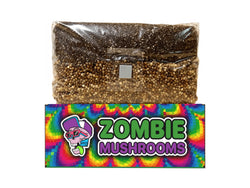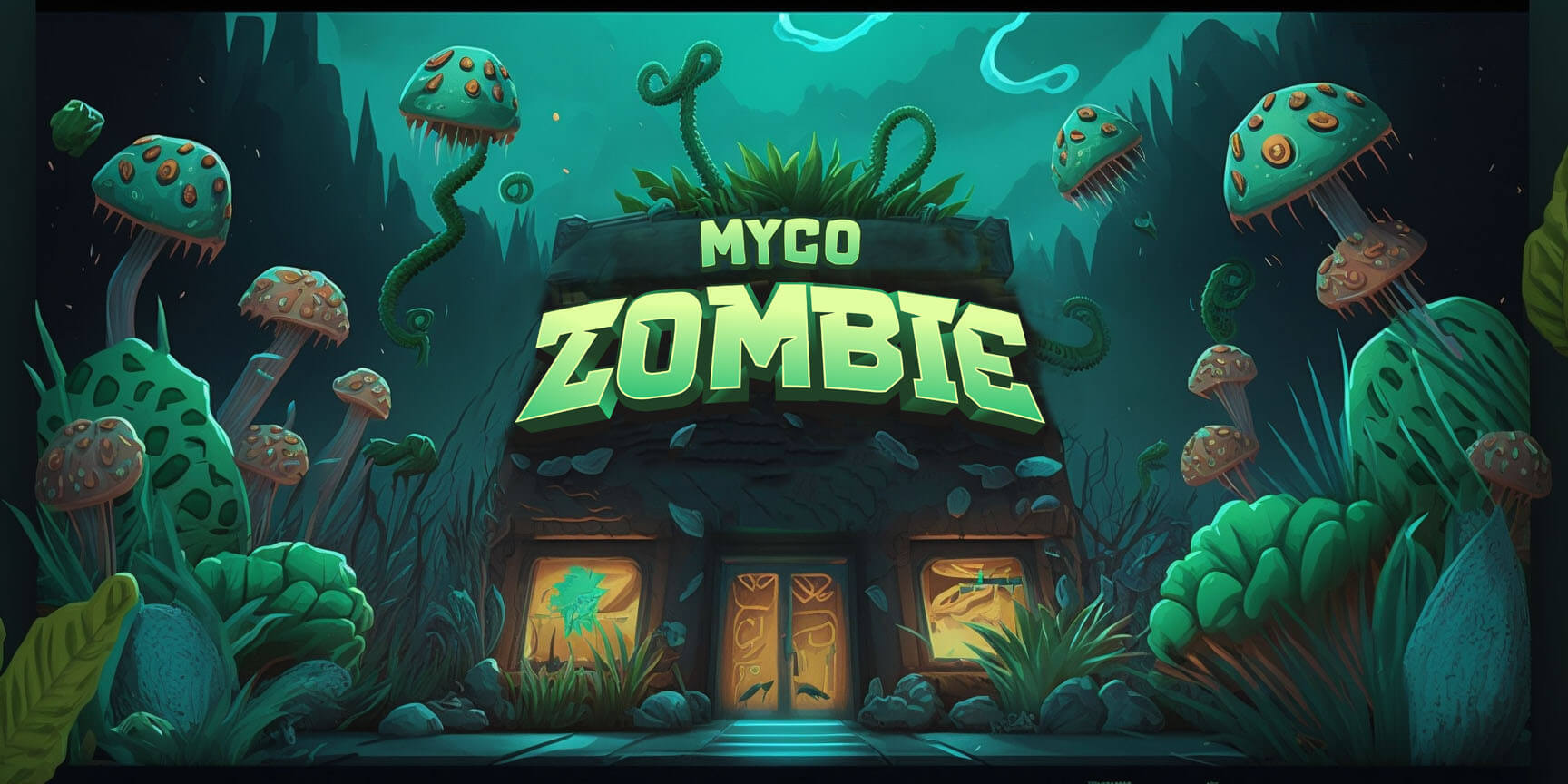- Mushrooms need substrates with a C:N ratio between 20:1 and 30:1 for optimal mycelial growth.
- Ideal substrate moisture is 60%-70%, critical for preventing contamination and promoting colonization.
- Coffee grounds are high in nitrogen and fast to colonize but carry a high contamination risk if not properly treated.
- Enriched grain spawn is best used for inoculation rather than as a standalone substrate.
- Spent Mushroom Substrate (SMS) can be recycled as compost or a soil enhancer for sustainable cultivation.
If you are interested in mushroom cultivation, understanding substrate selection is a very important step for success. Your substrate is not merely a base; it serves as the food source that fungi consume as they develop. Correct substrate choice is essential. In this detailed guide, we will examine the best mushroom substrates for various fungi species, along with preparation methods, reusability options, and sustainable practices. This guide will cover what you require to grow mushrooms effectively and produce a plentiful yield.
What Is a Mushroom Substrate?
A mushroom substrate is an organic material that aids the growth and development of fungi, acting as both a structural base and nutrient source. Unlike plants that root in soil and use photosynthesis, mushrooms are saprotrophs—they break down organic matter to get nutrients.
These substrates supply carbon, nitrogen, minerals, and moisture, all of which affect how well colonization and fruiting happen. The chosen substrate must be suitable for the species being grown, provide enough surface area for mycelium to spread, and resist contaminants that could outcompete the fungi.
Substrate choice greatly affects yield, growth speed, mold resistance, and even the flavor of edible mushrooms. From inexpensive straw to wood pellets and used coffee grounds, each substrate has particular advantages and disadvantages.

What Makes a High-Quality Mushroom Substrate?
The quality of a mushroom substrate is decided by a mix of physical and chemical traits that together make the best conditions for mushroom mycelium to flourish.
Carbon-to-Nitrogen Ratio (C:N)
- The best C:N ratio for mushroom growth is usually between 20:1 and 30:1 (Stamets, 2000).
- High carbon materials include straw, sawdust, or cardboard, which are the main part of most substrates.
- Nitrogen sources such as wheat bran, soybean meal, or used coffee grounds assist in speeding up colonization but can raise contamination risk if not properly handled.
Too much carbon results in a substrate that lacks nutrients, while too much nitrogen can cause bacterial overgrowth. Balance is important.
Texture and Structure
- Texture affects airflow and water retention. Loosely packed substrates allow air circulation—which mushrooms require—and stop anaerobic conditions that encourage contamination.
- A finely ground or overly compacted substrate reduces airflow, while very coarse substrates may not hold enough moisture.
pH Level
- Most cultivated mushroom species prefer a substrate pH between 5.5 and 6.5, which is slightly acidic.
- Some types, like Agaricus bisporus (white button mushrooms), prefer a slightly higher pH.
- Lime (calcium carbonate) or gypsum (calcium sulfate) are often added to adjust and stabilize the pH.
Moisture Content
- As noted by Royse (2010), the substrate’s moisture content should be between 60% and 70%.
- Too much moisture can cause anaerobic conditions and contamination, while too little slows or stops mycelial growth.
- A simple test: squeeze a handful of the wet substrate—if one or two drops come out, you’re in the right range; if water drips freely, it’s too wet.

Common Mushroom Substrate Types
Different mushroom species thrive in different substrates. Choosing the correct one decides not only how easy cultivation is but also total output. Here’s a more detailed look at the most popular and effective substrates in home and commercial mycology
Straw
- One of the most easily obtained and affordable choices.
- Works best for oyster, enoki, and some Psilocybe strains.
- Pasteurization is usually enough; sterilization is not needed.
- Can include wheat, rye, barley, or oat straw.
Hardwood Sawdust and Pellets
- Best for wood-loving species like shiitake, reishi, and lion’s mane.
- Hardwood (oak, maple, beech) sawdust works much better than softwood types.
- Usually sterilized when mixed with nutrient additions like wheat bran (10–20% addition rate).
- Easily stored and can be increased for large-scale operations.
Manure-Based Composts
- Commonly used in button mushroom production.
- Rich in nutrients and helps retain moisture.
- Requires careful pH adjustment and pasteurization using steam or hot water.
- Often pre-composted or cured before inoculation.
Coconut Coir and Vermiculite
- A popular choice for growing Psilocybe cubensis using the PF Tek or Monotub methods.
- Coir offers great texture and water retention.
- Vermiculite adds aeration and holds moisture.
- Coir is naturally anti-fungal and has a neutral pH, making it easy for beginners.
Coffee Grounds
- High in nitrogen, which helps fast colonization.
- Free and easily found from cafes or home espresso machines.
- Known to easily get contaminated—should be used carefully and mixed with straw or coir for best results.
- Needs immediate use or quick sterilization after brewing.
Enriched Grain Spawn
- Grains like rye, millet, or sorghum are used mainly as spawn rather than fruiting substrate.
- Provides nutrient-rich energy for initial colonization.
- When fully colonized, grain can inoculate bulk substrates like straw, coir, or sawdust.
Match the Substrate to the Mushroom Species
Each mushroom has a preferred substrate based on its natural role. Here’s a quick guide for best matching
| Mushroom Species | Preferred Substrate |
|---|---|
| Oyster (Pleurotus) | Straw, cardboard, coffee grounds, coir |
| Shiitake (Lentinula) | Hardwood sawdust, supplemented blocks |
| Lion’s Mane (Hericium) | Sterilized hardwood + bran |
| Reishi (Ganoderma) | Hardwood logs, sterilized sawdust blocks |
| Button (Agaricus) | Compost, manure-based substrates |
| Psilocybe cubensis | Brown rice flour + vermiculite, coir mixes |
Choosing the best mushroom substrate not only makes cultivation easier but also improves yield, look, and growth speed.

How to Prepare Mushroom Substrate at Home
Home preparation makes sure of freshness, sterilization, and gets rid of hidden contaminants.
Step 1: Cleaning and Hydration
- Use clean containers and remove large debris from the substrate.
- Hydrate until you reach 60–70% moisture content. Mix well.
- Coarse materials like straw may need soaking before cutting to make processing easier.
Step 2: Pasteurization or Sterilization
-
Pasteurization removes competing microbes but keeps helpful organisms.
- Method: Hot water soak at 150–170°F (65–77°C) for 1–2 hours OR hydrated lime bath for 12–24 hours.
- Best for straw, manure, and coir without added nutrients.
- (Chang & Miles, 2004)
-
Sterilization is needed for nutrient-rich or finely ground substrates like sawdust + bran.
- Use an autoclave or pressure cooker at 15 PSI for 90 minutes.
- Let cool completely before inoculation.
Step 3: Moisture Testing
- Always do the squeeze test before sealing or inoculating your substrate.
- You can also add calcium sulfate (gypsum) to stabilize pH and reduce clumping.
Expanding Commercial or Home Grow Kits
Grow kits give a head-start by providing pre-colonized spawn. You can make them more useful by inoculating more substrate
- Open your colonized kit in a clean area.
- Move the spawn into your freshly prepared substrate.
- Mix well and seal properly.
- Keep the mix in incubation (dark, humid space at ~70-75°F) until fully re-colonized.
This expansion can double or triple your harvest per kit without buying more spawn.
What to Do with Spent Mushroom Substrate (SMS)
Even after fruiting, spent mushroom substrate still has good biological value. Don't throw it away—use it again
- Compost Enhancer: Breaks down quickly and speeds up decomposition.
- Animal Feed: Studies suggest SMS can be mixed into livestock feed.
- Soil Amendment: Also called "biofertilizer," SMS improves soil structure and adds nitrogen (Zhang et al., 2002).
- Outdoor Beds: Use it to inoculate outdoor garden beds—mushrooms may grow again if conditions are right.
- Mulch or Erosion Control: Apply to slopes or gardens to hold moisture and add fungal diversity.
Store dry or composted SMS to reduce odor and insect attraction.

Sustainable and Cost-Effective Substrate Use
Growing mushrooms doesn't need to be costly or wasteful.
Use What You Have
- Agricultural byproducts like straw, corn stalks, and sawdust are great and often thrown away.
- Coffee shops, breweries, and sawmills are often happy to give materials away.
Eco-Friendly Sourcing
- Choose renewable substrates (coconut coir, straw) over limited or heavily processed ones.
- Avoid wood or MDF sawdust with chemicals because of possible toxicity.
Reuse With Caution
- Substrates that are only slightly used up can be revitalized with new spawn, especially for fast-colonizing types like oyster mushrooms.
- Always rehydrate, heat treat again, and check for contaminants before reuse.

Tips for Scaling Your Mushroom Operations
Once you understand substrate behavior, it becomes easier to scale up
- Bulk Ingredients: Buy substrate materials like hardwood pellets, wheat bran, or coir by the bale or 50-lb sack.
- Sterilization Tools: Invest in an electric pressure cooker, flow hood, and myco-safe containers.
- Automate Pasteurization: Use barrel pasteurization or steam tanks.
- Environmental Control: Keep consistent temperature, air exchange, and humidity.
Consistency in sterilization and substrate preparation becomes even more important at larger scales.

Avoid These Common Substrate Mistakes
Even skilled growers make mistakes that can be avoided. Here’s what to watch out for
- Overhydration: Leads to bacterial growth. Always do a squeeze-test.
- Wrong Substrate for Species: Research what your mushroom needs to eat.
- Lack of Pasteurization/Sterilization: Very important when using nitrogen-rich additions.
- Poor Aeration: Leads to anaerobic bacteria that can ruin your grow.
- Wrong pH Balance: Use gypsum or lime as needed.
Mistakes at the substrate stage can waste weeks of work—plan and prepare carefully.
Beginner FAQ About Mushroom Substrates
Can mushroom substrate be reused?
Yes, reusing is possible, especially if the substrate is not contaminated. Dry and rehydrate, or compost it in a new outdoor inoculation area.
Is straw the best mushroom substrate for beginners?
Yes, straw is inexpensive, easy to work with, and widely available. It's perfect for oyster mushrooms and doesn’t need complicated preparation.
Can all mushroom species grow on the same substrate?
Definitely not. Each species developed to digest particular materials—match them properly.
Do I need a pressure cooker to grow mushrooms?
Only for sterilizing enriched or hardwood-based substrates. For straw or coir, pasteurization with hot water works well.
What’s the cost-effective combination for a medium-sized operation?
Coir + vermiculite with colonized grain spawn offers a good mix of yield, contamination resistance, and startup cost.
Why Choose Zombie Mushrooms?
Zombie Mushrooms is a great place for dependable, good mushroom cultivation tools, substrates, and kits. Whether you are just starting to learn about fungi or running a small farm, their selected product range includes sterilized grain spawn, substrate mixes, and advanced grow tools. The brand focuses on user education and is dedicated to making modern mushroom farming clear and understandable.




